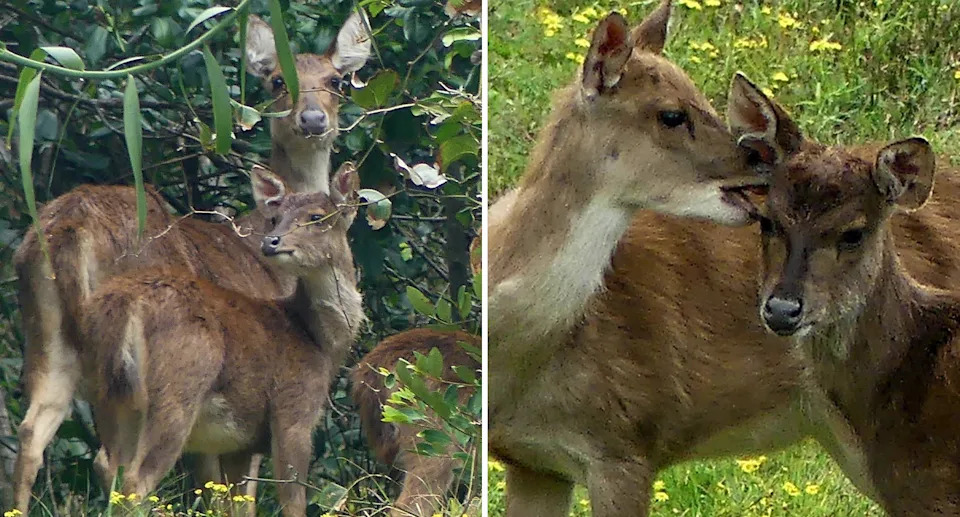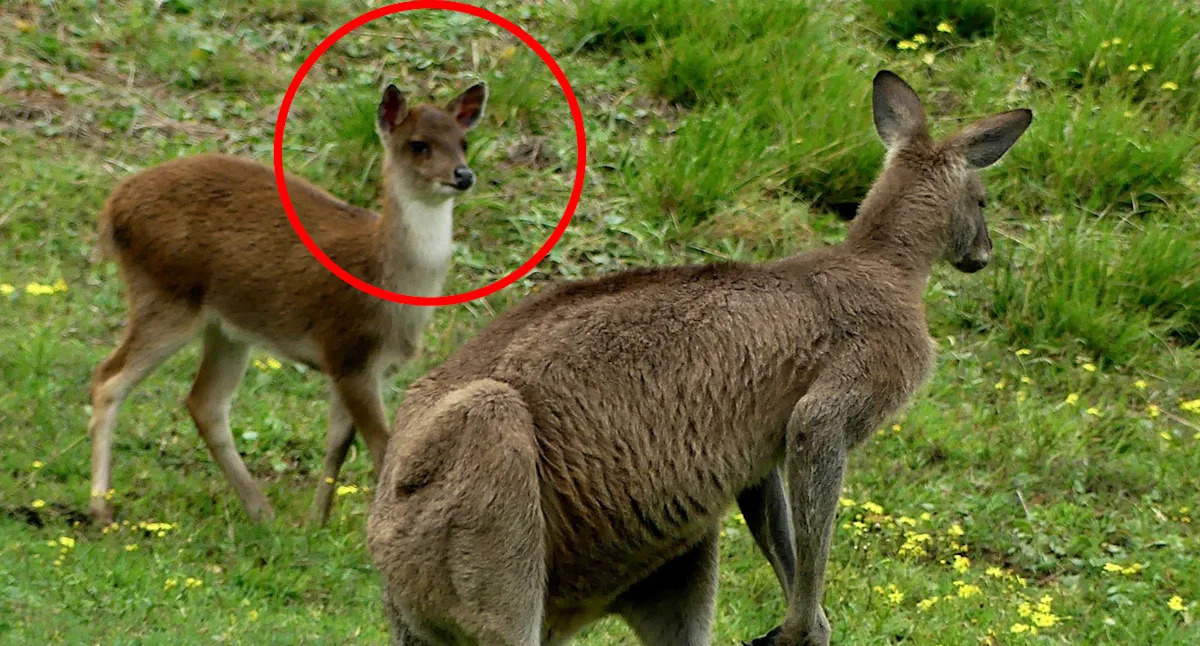Photos of kangaroos and deer grazing side by side in a popular seaside town have been described as “adorable” as onlookers struggled to tell the difference among all the brown fur and whiskers. However, the scene holds a more dire concern, and authorities have been urged to take action.
Port Macquarie local Di Watkins snapped the photos on Saturday along a residential street, and she told Yahoo News she did her best not to disturb the animals as they lazily grazed by the side of the road on a vacant block near the beach. She said there were about 20 animals in total, 15 deer and 5 kangaroos, and the animals “didn’t care that each other was there”.
“I was driving past, and I just spotted them. So I turned around, parked the car, and crept up behind them to get closer,” she told Yahoo. “The little baby deer walked straight up to one of the kangaroos, and it didn’t really care; it was cute.”
However, Reece Pianta from the Invasive Species Council (ISC) told Yahoo that, while amicable during seasons of good weather, the deer can easily outcompete native species and become “aggressive”, with the deer population “reaching plague proportions” in Australia.
“Deer are hyper-aggressive grazers,” he told Yahoo. “They can actually feed on the shoots barely coming from [the soil] and denude the undergrowth of the forest areas, which completely outcompete native species for nutrients.”

Deer populations are growing to ‘plague proportions’ in Australia. Source: Di Watkins
Feral deer marked as ‘priority pest species’ by authorities
Port Macquarie Hastings Council told Yahoo News that “it is aware of the growing feral deer population” in the area and it’s doing its bit to push targeted control programs along the region.
“Feral deer pose a risk to motorists, degrade native habitats, and compete with native wildlife,” a council spokesperson said. “Council is currently in the second year of an agreement with the North Coast Local Land Services that supports targeted control programs and improved control methods.”
The Local Land Services (LLS) also weighed in, telling Yahoo News that feral deer are “listed as a priority pest species and pose a threat socially, environmentally and economically”.
“We are constantly evaluating the program and looking at improved methods to increase our management efficiency,” a LLS spokesperson said. “They can cause road hazards and accidents, trample native vegetation, damage crops and gardens and can also spread disease to native animals and livestock.”
Deers ‘taking advantage’ of good seasonal weather in Australia
Australia’s feral deer population is between one and two million, and the population has grown rapidly thanks to good seasonal weather in the past few years. There are concerns that this growing population will pose a significant threat to native animals when the tide turns and tougher conditions are faced.
“We’ve had a couple of really good seasons in terms of rainfall, we haven’t had drought conditions suppress the deer population. So lots of invasive species, like deer and pigs, are really taking advantage of these good conditions and are creating lots of offspring. Big generations are being created,” Reece said.
“But once the weather turns and things get a bit tougher, that’s where they can really start to have an impact on the native animal populations… they become aggressive.”
Reece said the issue can easily grow “out of control” and the ISC want to “see deer population control stepped up” before it’s too late.
The federal government has established a containment buffer zone that stretches from western Victoria up through the central west of New South Wales to Rockhampton in Queensland. The aim is to have strong surveillance and removal efforts along this ‘border’ to stop the spread across the continent. However, there are already populations of deer in Western Australia.
Do you have a story tip? Email: newsroomau@yahoonews.com.
You can also follow us on Facebook, Instagram, TikTok, Twitter and YouTube.


